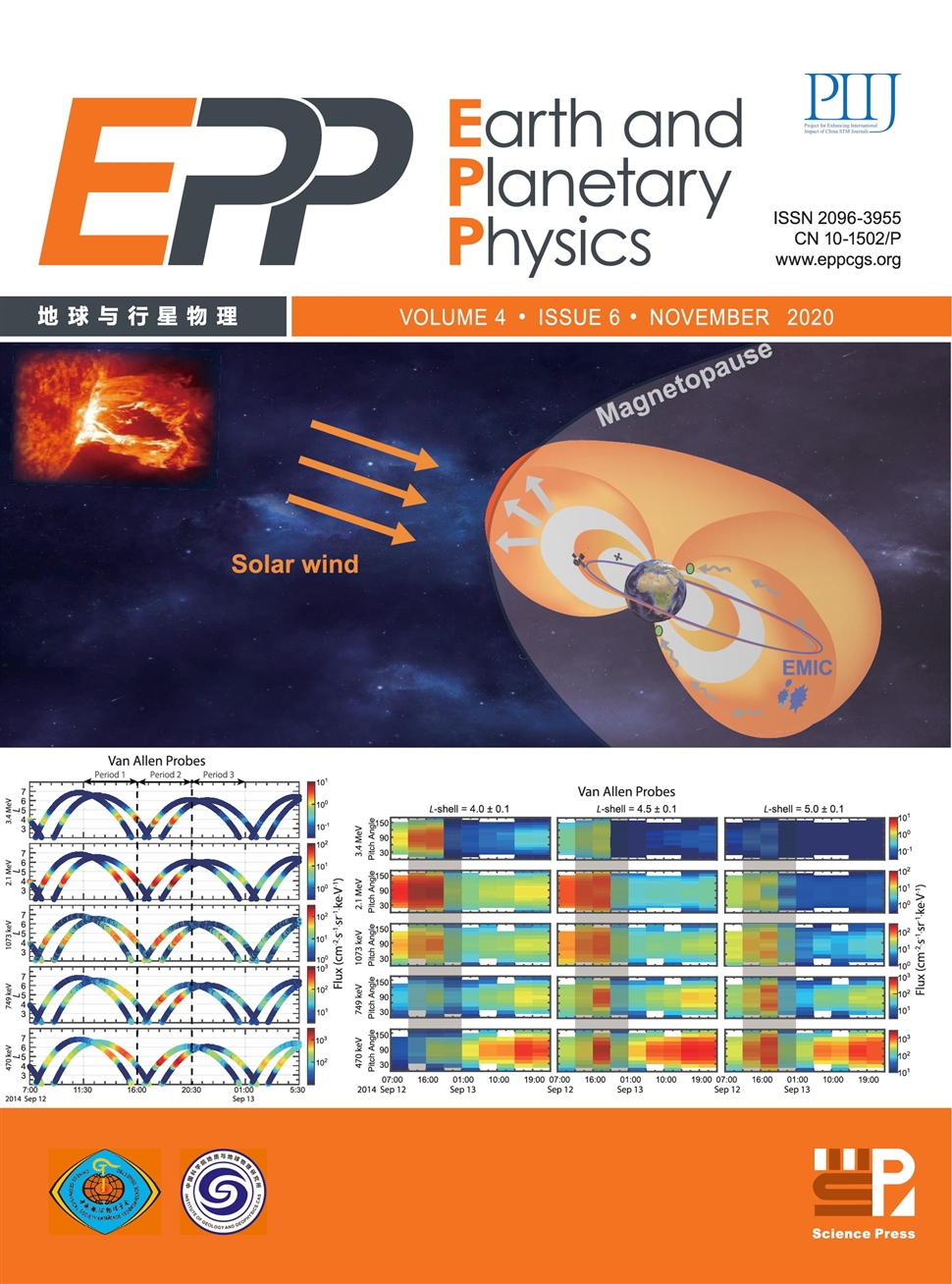Response of photoelectron peaks in the Martian ionosphere to solar EUV/X-ray irradiance
作者:XiaoShu Wu,Jun Cui,YuTian Cao,WeiQin Sun,Qiong Luo,BinBin Ni
摘要:An important population of the dayside Martian ionosphere are photoelectrons that are produced by solar Extreme Ultraviolet and X-ray ionization of atmospheric neutrals.A typical photoelectron energy spectrum is characterized by a distinctive peak near 27 eV related to the strong solar HeⅡ emission line at 30.4 nm,and an additional peak near 500 eV related to O Auger ionization.In this study,the extensive measurements made by the Solar Wind Electron Analyzer on board the recent Mars Atmosphere and Volatile Evolution spacecraft are analyzed and found to verify the scenario that Martian ionosphere photoelectrons are driven by solar radiation.We report that the photoelectron intensities at the centers of both peaks increase steadily with increasing solar ionizing flux below 90 nm and that the observed solar cycle variation is substantially more prominent near the O Auger peak than near the HeⅡ peak.The latter observation is clearly driven by a larger variability in solar irradiance at shorter wavelengths.When the solar ionizing flux increases from 1 mW·m^-2 to 2.5 mW·m^-2,the photoelectron intensity increases by a factor of 3.2 at the HeⅡ peak and by a much larger factor of 10.5 at the O Auger peak,both within the optically thin regions of the Martian atmosphere.
发文机构:National Astronomical Observatories Planetary Environmental and Astrobiological Research Laboratory(PEARL) Chinese Academy of Sciences Center for Excellence in Comparative Planetology Department of Space Physics
关键词:MARSIONOSPHEREPHOTOELECTRONsolarirradianceMAVEN
分类号: P18[天文地球—天文学]
- Inertial gravity waves observed by a Doppler wind LiDAR and their possible sources
- Anomaly distribution of ionospheric total electron content responses to some solar flares
- Editorial Committee of Earth and Planetary Physics
- Mars Ion and Neutral Particle Analyzer (MINPA) for Chinese Mars Exploration Mission (Tianwen-1): Design and ground calibration
- The source of tropospheric tides
- Morphology and possible origins of the Perm anomaly in the lowermost mantle of Earth
- Characteristics of the quasi-16-day wave in the mesosphere and lower thermosphere region as revealed by meteor radar,Aura satellite,and MERRA2 reanalysis data from 2008 to 2017
- An ICME impact on the Martian hydrogen corona
- Treatment of discontinuities inside Earth models:Effects on computed coseismic deformations
- Recent investigations of the near-Mars space environment by the planetary aeronomy and space physics community in China


